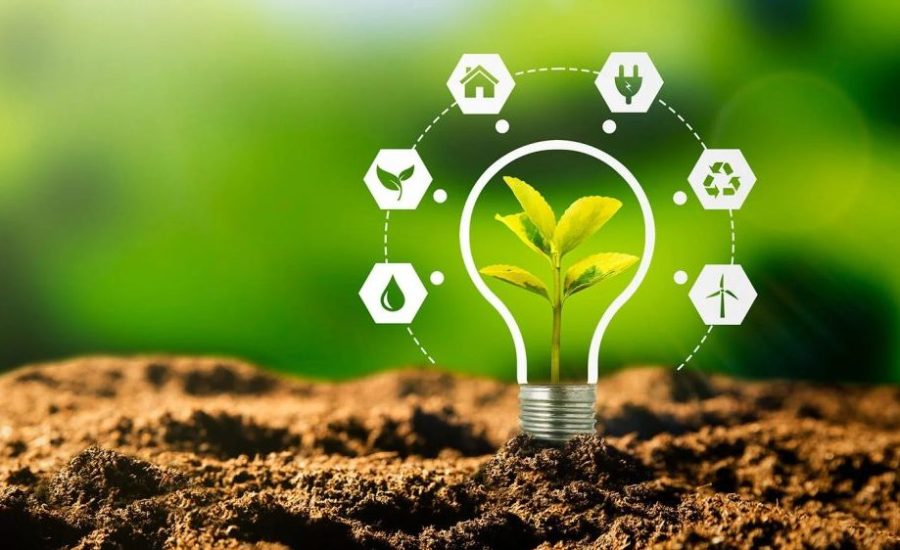In today’s ever-evolving world, there is an urgent call for sustainable living – the key to a greener future. Society is increasingly recognizing the importance of nurturing the planet that sustains us. Indeed, the shift towards a more sustainable lifestyle is not merely a trend, but an essential response to the global environmental crisis. But what does sustainability truly entail, and how can we, as individuals, make a difference?
Sustainability, as we’ll delve deeper into in this post, is a multifaceted concept. It encompasses various aspects of life, from the food we consume, the clothes we wear, to how we travel. It’s not just about reducing, reusing, or recycling but involves making conscious choices that contribute to long-term ecological balance.
In this post, we’ll explore the principles of sustainability, demystify common misconceptions, and provide practical tips on adopting a sustainable lifestyle. It’s high time we understood that sustainability is not just a responsibility of corporations and governments, but also of individuals. Your choices and actions matter, and they can significantly influence our shared environment.
By the end of this post, you’ll realize that sustainable living doesn’t require drastic changes or sacrifices. It’s about making simple, mindful decisions in our everyday lives that can collectively lead to significant positive impacts. From reducing plastic waste to supporting sustainable brands, every small step can contribute to a greener, healthier planet.
So, are you ready to embrace sustainable living and be a part of the solution, not the problem? Join us on this enlightening journey towards a more sustainable future. Together, we can make a difference today for a greener, more sustainable tomorrow. Stay tuned, the change begins with you! 💚🌍
Understanding Sustainability
The term sustainability stems from the Latin word sustinere, meaning “to hold” or “to maintain.” At its core, sustainability is about maintaining a harmonious relationship between humanity and the natural world. It’s a call to live in a way that allows future generations to thrive while meeting the needs of the present.
In 1987, the Brundtland Commission offered a now-famous definition: sustainability is “meeting the needs of the present without compromising the ability of future generations to meet their own needs.” This powerful statement reminds us that we are stewards, not owners, of this planet. The choices we make today ripple outward, shaping the legacy we leave behind.
But sustainability is not just an environmental issue. It spans social justice, economic equity, and community wellbeing. It’s a mindset, a guiding principle, and a lifestyle — one that requires collective action and individual responsibility.
Three Dimensions of Sustainability
Sustainability is typically represented by a Venn diagram of three interconnected pillars: environmental, social, and economic. True sustainability can only be achieved when all three dimensions are addressed in balance.
Environmental Sustainability
This pillar focuses on protecting the Earth’s natural systems. It includes responsible use of resources, reduction of pollution, protection of biodiversity, and efforts to combat climate change. Environmental sustainability asks us to consider the long-term impacts of our actions on ecosystems and the planet as a whole.

Social Sustainability
Social sustainability emphasizes equity, inclusion, human rights, education, and access to essential services. It ensures that all individuals can live with dignity and participate fully in society. This dimension promotes community resilience and fosters cultures of care, empathy, and cooperation.
Economic Sustainability
Economic sustainability involves creating systems that support long-term economic health without degrading social or environmental resources. It includes fair wages, ethical labor practices, support for local economies, and innovation that drives both prosperity and sustainability.
When these three dimensions overlap, we move closer to a sustainable world — one where prosperity does not come at the cost of people or the planet.
Three Dimensions of Sustainability
Sustainability is typically represented by a Venn diagram of three interconnected pillars: environmental, social, e economic. True sustainability can only be achieved when all three dimensions are addressed in balance. Each of these pillars plays a unique and essential role in creating a world that is equitable, prosperous, and environmentally sound.
Environmental Sustainability
Environmental sustainability focuses on maintaining the integrity and health of the natural world. It emphasizes the need to live within the planet’s ecological limits by preserving biodiversity, minimizing pollution, reducing greenhouse gas emissions, and managing natural resources responsibly.
It involves actions such as protecting forests, rivers, oceans, and wildlife habitats; transitioning to renewable energy; and reducing our carbon footprint through sustainable agriculture, urban design, and waste management. Environmental sustainability also includes adopting circular economy principles — where materials are reused, recycled, or regenerated instead of discarded.
Without a healthy planet, economic growth and human well-being cannot be sustained. Clean air, fresh water, fertile soil, and stable climate systems form the foundation of life — and they are all directly impacted by human activity. Prioritizing environmental sustainability ensures that ecosystems can continue to support both current and future generations.
Social Sustainability
Social sustainability emphasizes the importance of human rights, equity, community resilience, education, and health. It is about building inclusive societies where all individuals, regardless of gender, race, age, or income level, can lead fulfilling lives with dignity and opportunity.
This pillar includes access to basic needs such as clean water, food, shelter, education, and healthcare. It also involves the promotion of gender equality, labor rights, safe working conditions, and respect for cultural diversity.
Strong social systems contribute to stability and peace, making it easier to address environmental and economic challenges. For example, educated and empowered communities are more likely to engage in environmental stewardship and innovate sustainable solutions.
In short, social sustainability is about creating a society that nurtures well-being, justice, and participation for all — and that strengthens the capacity of communities to adapt to change and thrive in the face of uncertainty.

Economic Sustainability
Economic sustainability refers to the capacity of economies to support people’s livelihoods without degrading the environment or worsening inequality. It involves long-term planning, innovation, and the equitable distribution of resources and wealth.
Key principles of economic sustainability include promoting ethical business practices, investing in green jobs, supporting local economies, and reducing overconsumption. It also calls for financial systems that reward sustainability and resilience, rather than short-term profits at the expense of long-term damage.
Sustainable economic growth must be inclusive, creating opportunities for employment and entrepreneurship while ensuring that the benefits of progress are shared broadly. When companies, governments, and individuals embrace this pillar, they contribute to economies that are robust, fair, and aligned with ecological balance.
The Interconnection Between the Three Pillars
Though distinct, the three dimensions of sustainability are deeply interwoven. For instance, poor environmental policies can lead to social issues like displacement or health crises. Likewise, ignoring social equity can result in economic inefficiencies and unrest.
True sustainability emerges in the overlap of the three pillars — where environmental protection supports social well-being, and economic development empowers both people and the planet. A decision in one area inevitably affects the others, which is why holistic and integrated approaches are essential.
For example, a community that invests in renewable energy (environmental) can reduce pollution-related illnesses (social) while creating jobs and saving money (economic). This synergy is the essence of sustainable development.
The Importance of Sustainable Living
Sustainable living is not just an abstract concept — it’s a lifestyle that acknowledges our connection to the Earth and strives to minimize negative impacts. It involves daily choices that reduce harm and foster regeneration.
While some may associate sustainability with inconvenience or sacrifice, it actually offers numerous personal and global benefits:
Conservation of Resources: By using resources mindfully, we reduce the pressure on finite reserves like freshwater, fossil fuels, and forests.
Lower Environmental Footprint: Conscious consumption and reduced waste mean less pollution, fewer greenhouse gas emissions, and healthier ecosystems.
Improved Personal Health: A sustainable lifestyle often includes more plant-based foods, time in nature, and reduced exposure to toxins — all of which improve wellbeing.
Economic Savings: Reusing, reducing consumption, and investing in efficiency can lead to long-term financial benefits.
Greater Community Connection: Sustainability fosters stronger local economies, community gardens, farmer’s markets, and shared initiatives.
Steps Towards a Greener Future
Adopting sustainable living doesn’t require perfection or massive lifestyle overhauls. It’s about small, intentional steps taken consistently. Here are practical areas where anyone can begin making a difference:
Energy Efficiency and Renewable Energy
Energy consumption is one of the biggest contributors to carbon emissions. Making homes more energy-efficient — through proper insulation, energy-efficient lighting, smart thermostats, and modern appliances — is an easy and impactful start.
Switching to renewable energy sources, like solar, wind, and hydroelectric power, reduces reliance on fossil fuels. Even renting solar panels or choosing a green energy provider can significantly reduce your carbon footprint.
Governments and industries also play a vital role by investing in large-scale renewable infrastructure and incentivizing sustainable innovation.
Sustainable Transport
The way we move through the world matters. Transportation accounts for a substantial share of global greenhouse gas emissions, especially in urban areas.
Walk or bike for short distances. It’s good for the planet and your health.
Use public transport whenever possible to reduce traffic congestion and emissions.
Carpool or consider electric or hybrid vehicles if you drive.
Support infrastructure that makes sustainable transport accessible — like safe bike lanes, EV charging stations, and efficient metro systems.
Waste Reduction and Recycling
Reducing waste is one of the most accessible entry points into sustainable living. It starts with rethinking our consumption habits and being more intentional about what we bring into our lives.
Avoid single-use plastics: Carry reusable water bottles, bags, and containers.
Compost food scraps to reduce landfill waste and nourish the soil.
Buy in bulk to reduce packaging.
Recycle properly, ensuring materials are clean and sorted correctly.
Waste reduction also means buying less and choosing quality over quantity — an act that challenges our fast-consumption culture.
Sustainable Diet and Food Choices
Food production is a major driver of deforestation, biodiversity loss, and climate change. Fortunately, it’s an area where personal choices make a powerful difference.
Eat more plant-based meals. Reducing meat and dairy consumption lowers your environmental impact.
Buy local and seasonal produce to cut emissions from transportation.
Support organic and regenerative farms that care for the land.
Avoid food waste by planning meals and storing food properly.
Even starting a small herb garden can deepen your connection to where your food comes from and promote more mindful eating habits.
Mindful Consumption and Minimalism
Consumer culture often equates happiness with material possessions, but studies show that experiences, relationships, and purpose bring more lasting fulfillment.
Minimalism encourages us to question what we truly need. This doesn’t mean living with nothing — it means choosing with intention and prioritizing quality, ethics, and sustainability.
Support sustainable brands that prioritize ethical labor and environmentally-friendly materials.
Buy secondhand when possible — for clothing, furniture, or electronics.
Repair, repurpose, and extend the life of items before replacing them.
The result is not just less clutter in your life, but more time, money, and energy for what truly matters.
Sustainable Communities and Collective Action
While individual efforts are vital, systemic change is necessary to tackle the global challenges we face. That’s where community engagement and policy advocacy come into play.
Join or support local environmental initiatives, such as river cleanups, community gardens, or zero-waste groups.
Vote for and advocate policies that protect ecosystems, reduce emissions, and promote green jobs.
Encourage schools and workplaces to adopt more sustainable practices, like recycling programs or energy-saving policies.
We’re all interconnected — our individual choices influence broader systems, and collective action multiplies our impact.
Technology and Innovation in Sustainability
Innovation is accelerating solutions to the planet’s most pressing issues. From green building materials to circular economy models, new ideas are transforming how we grow, produce, transport, and consume.
Examples include:
Vertical farming, which uses less land and water.
Electric public transportation, reducing urban pollution.
Smart grids and energy storage, optimizing renewable energy use.
Sustainable packaging alternatives, like compostable bioplastics.
Supporting and investing in these innovations — as consumers, entrepreneurs, or policymakers — will be key to a sustainable future.
Conclusão

In conclusion, sustainable living is not just a buzzword; it is a pressing necessity and a shared responsibility for a greener and healthier future. It’s about honoring the interconnectedness of all life and making choices that respect the planet’s limits while enhancing our quality of life.
We must move beyond viewing sustainability as optional or idealistic. It is practical, achievable, and essential. Every small act — from reducing waste to choosing clean energy, eating more plant-based meals to shopping mindfully — contributes to a much larger movement.
Businesses, governments, and individuals all have roles to play. Fortunately, many are already answering the call. As awareness grows, and as technology and community initiatives flourish, we move closer to a future where sustainable living is the norm.
Sustainability is not about perfection — it’s about progress, consistency, and care. It’s a journey worth taking, not just for ourselves, but for the generations yet to come. Let’s be mindful stewards of our only home and take action today for a brighter, greener tomorrow.
As the saying goes: “We do not inherit the Earth from our ancestors; we borrow it from our children.” Let’s return it better than we found it. 🌱🌍💚



